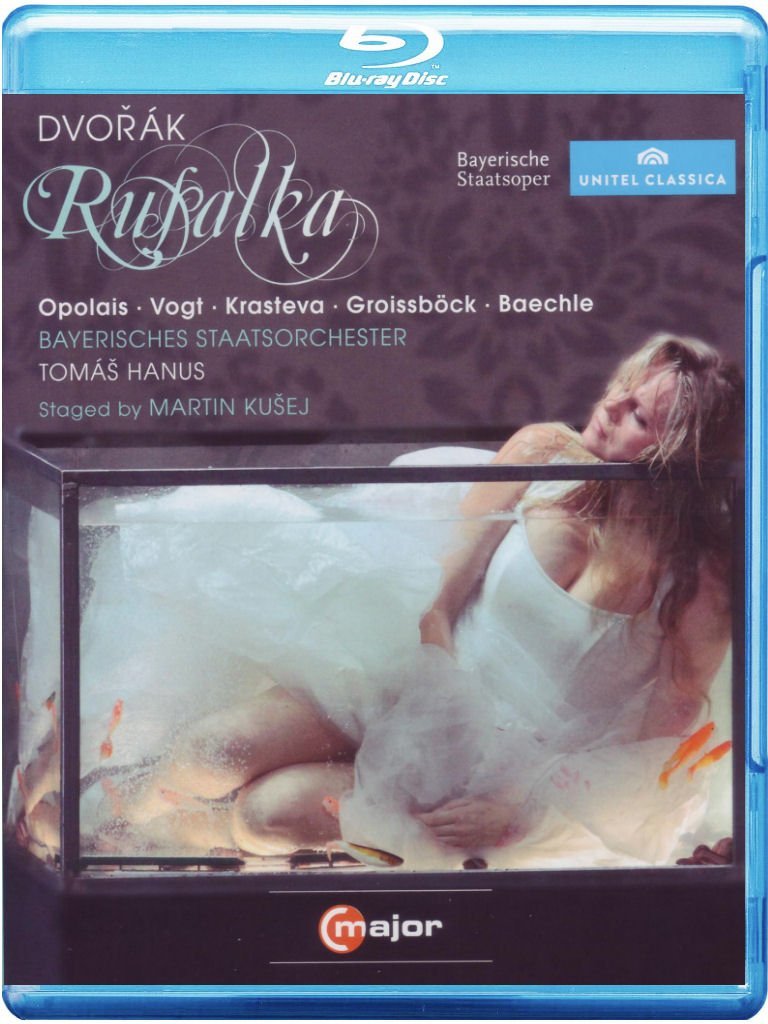
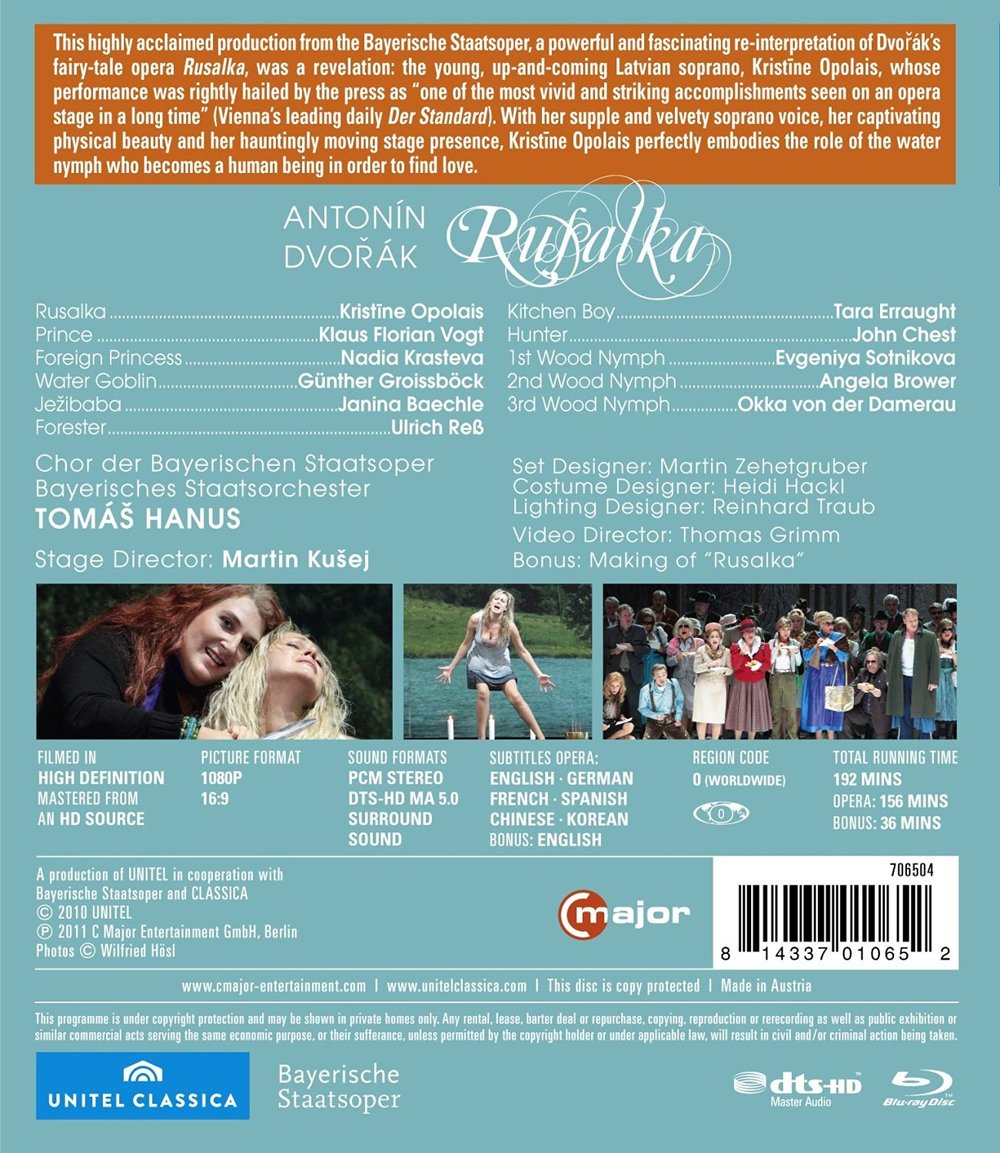
[Special note: it's August 2018, and there are now 3 different versions of this popular title on the market. I think all 3 are identical except for the artwork on the packages and discs. I wrote the story below about the 2011 version published by C Major under catalog # 706504. I think it plays fine in all regions of the world. But it appears business contracts called for this 2011 version not to be sold in Region 1, mostly the USA and the Far East. The 2012 version came out under the Kultur label. It appears it is "legal" everywhere. Finally, in 2016, C Major came out with new artwork on version 3, which has the catalog #750904. Sorry for the confusion. But shopping around can save you money as prices are all over the place.
Our stories about the later versions all just link to the text and screenshots below. Manyof the stories on this website are written in the first person plural voice ("we"). But here I write as "I" because this title is one of my personal favorites even though I know it's probably too radical for many readers. Henry C. McFadyen, Jr.]
Antonín Dvořák Rusalka opera to libretto by Jaroslav Kvapil. Directed 2010 by Martin Kušej at the Nationaltheater, Munich. Stars Kristīne Opolais (Rusalka), Klaus Florian Vogt (Prince), Nadia Krasteva (Foreign Princes), Günther Groissböck (Water Goblen), Janina Baechle (Ježibaba), Ulrich Reß (Forester), Tara Erraught (Kitchen Boy), John Chest (Hunter), Evgeniya Sotnikova (1st Wood Nymph), Angela Brower (2nd Wood Nymph), and Okka von der Damerau (3rd Wood Nymph). Tomáš Hanus conducts the Bayerisches Staatsorchester with the Chor der Bayerischen Staatsoper (Chorus Master Sören Eckhoff) and the Statisterie und Kinderstatisterie der Bayerischen Staatsoper. Set design by Martin Zehetgruber; costume design by Heidi Hackl; lighting design by Reinhard Traub; dramatic advisory by Olaf A. Schmitt. Directed for TV by Thomas Grimm. Sung in Czech. Released 2011, disc has has 5.0 dts-HD Master Audio sound. Grade: A+
Kušej's Rusalka story has three levels of meaning:
The base level is the traditional fairy tale of a water nymph whose infatuation with a human Prince leads both to disaster.
Kušej adds a true-crime (or "thriller") level by presenting the nymphs as girls locked in a watery dungeon to be raped at the pleasure of their water goblin "father" (with help from his wife, the witch).
Finally, Kušej asserts that many of the old fairy tales were admonitions about human trafficking. Well, the fairy tales are almost forgotten, but the trafficking continues.
In addition to rape in the dungeon, Kušej also changes the kitchen boy to a girl who is groped and later nearly murdered by her lecherous uncle. I asked myself, "Is all this going too far?" Well, the very next morning, I read an article in the Dallas Morning News about Yolanda Méndez, who at age 11 was sold by her parents in Mexico to her uncle. The uncle took Yolanda to Dallas and kept her locked up as his "mistress" for years until she escaped. (The uncle is now in prison.)
Yolanda's story silenced any criticism I had of Kušej's topical and allegorical overlays. After reading a bit about Joseph Fritzl (Austria), Natastha Kampush (Austria), and Jaycee Dugard (California), it finally dawned on me which real-world cases most closely relate to the Kušej's dungeon. Both involved religious figures in Texas: the David Koresh (Branch Davidian) catastrophe and the recent Warren Jeffs case, where a polygamist was convicted of the rape of many extremely young "wives," usually with the active approval of the mothers of the girls. Both these cases involved systematic persuasion of everyone involved by father figures who had rationalized their crimes in their own minds.
I previously gave Kušej the stingy grade of "C+" for his HDVDs of Genoveva, Elektra, and Lady Macbeth of Mtsensk. I thought his attempts to shock us in those productions were either too obscure or silly to take seriously. But subject Rusalka is a winner for Kušej in every way.
As is explained in the informative bonus feature, a Kušej project requires actors who can sing, not singers who try to act. Well, in this production everybody can do both. They say Opolais (who stared in The Gambler HDVD), turned down a Met debut (as Musetta) to work with Kušej. This decision took guts and smarts, and it appears to have paid off for her with accelerated fame in Europe. Vogt, perfect as the wan and ethereal Prince, has proved already his acting and singing prowess to HDVD fans in Lohengrin, Lulu, and Meistersinger . (Trivia question: both Ulrich Reß and John Chest appear in what other HDVD? Answer: the Bayerische Staatsoper Dialogue des Camélites.)
Tomáš Hanus successfully coordinates Dvořák's romantic music to the wild action on stage. Any time you think the plot is about to spin out of control, Hanus is there with some reassuring Dvořák melody and harmony to calm things down. So with that are you ready for some screen shots?
The nymphs in the basement hear the Water Goblin coming:
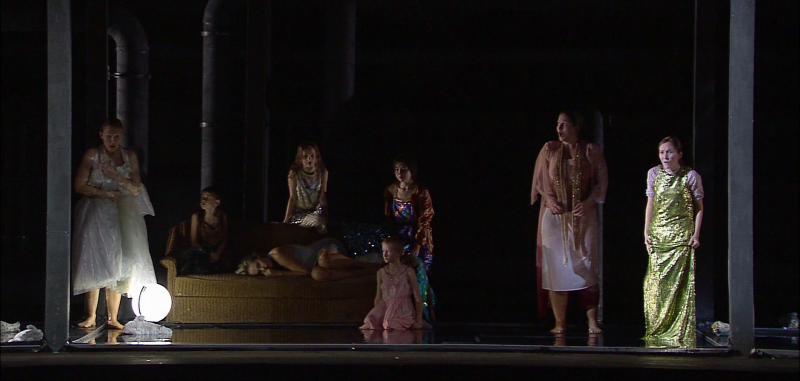
Father wants to get married. This time it might be me:
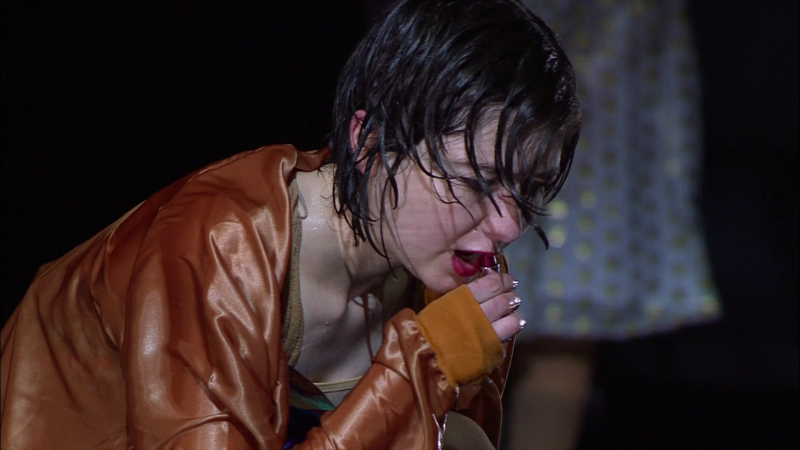
A good guess:
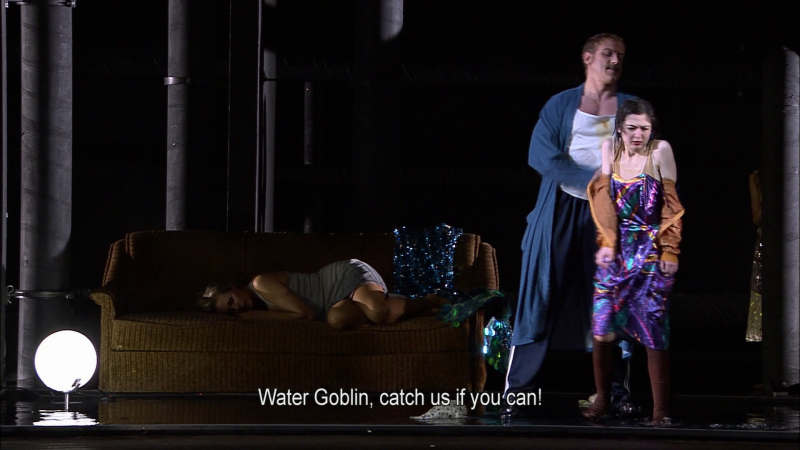
Rusalka:
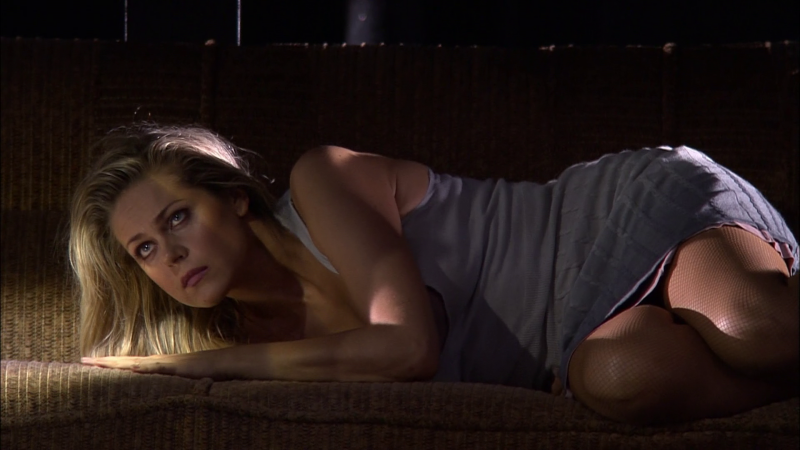
Now that Father's in a good mood, it's time to have a talk. Rusalka has fallen in love with a human Prince who swims in the lake:
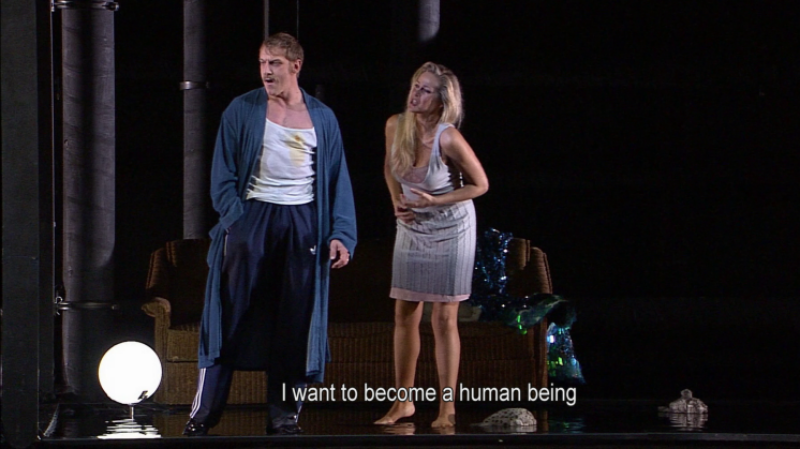
Rusalka sings the celebrated Song to the Moon:
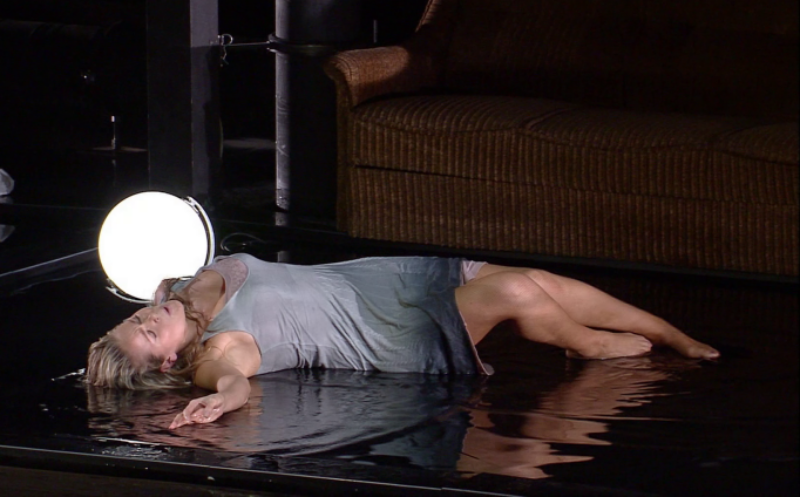
Father allows Rusalka to leave her watery home, and he sends her to the witch. The witch explains what the price will be if Rusalka joins the Prince and he is ever unfaithful to her:

Rusalka meets the Prince on dry land. He falls madly in love with Rusalka and announces he will marry her:
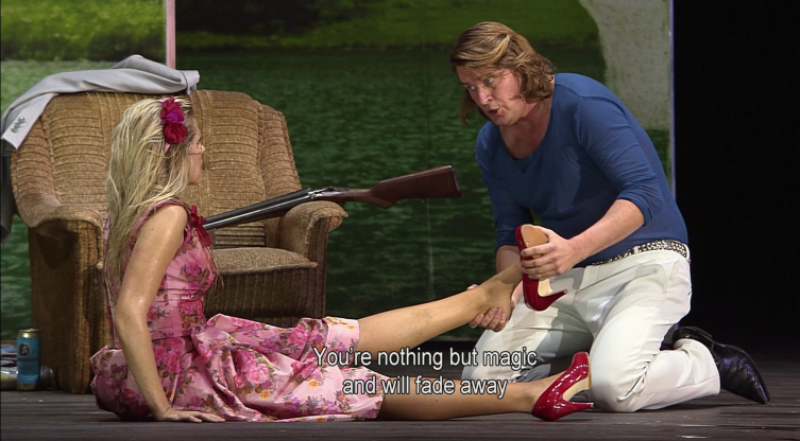
Rusalka loves the Prince more than ever, but she is horrified by the hot world of humans with their incessant survival instincts for blood:
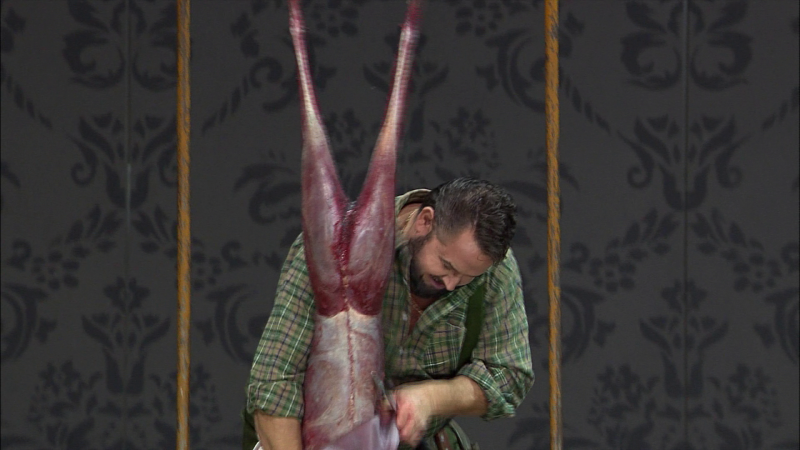
And for sex. Puzzled by Rusalka's coldness, the Prince gets seduced by the aggressive foreign Princess:
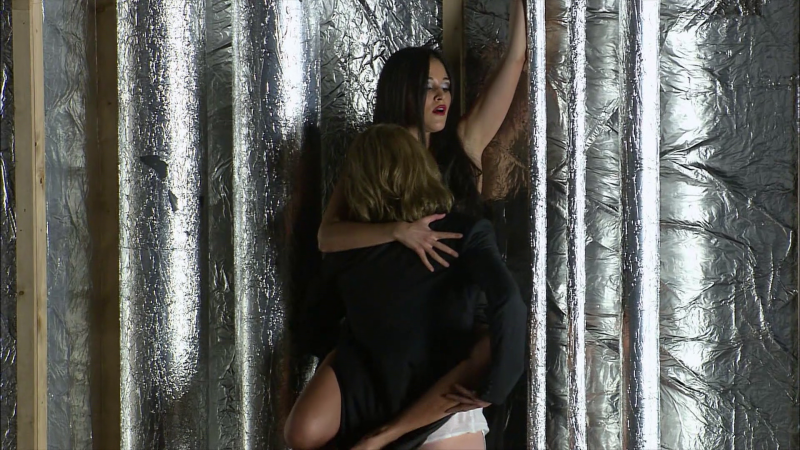
It's time for Rusalka's wedding feast. A normal human dinner looks as barbaric to Rusalka as the feast shown below looks to us. Kušej wanted to skin real deer on stage and had the requisite animals reserved at a specially slaughterhouse. There was a huge uproar about this, and the producers at the last minute agreed to substitute props for real deer:
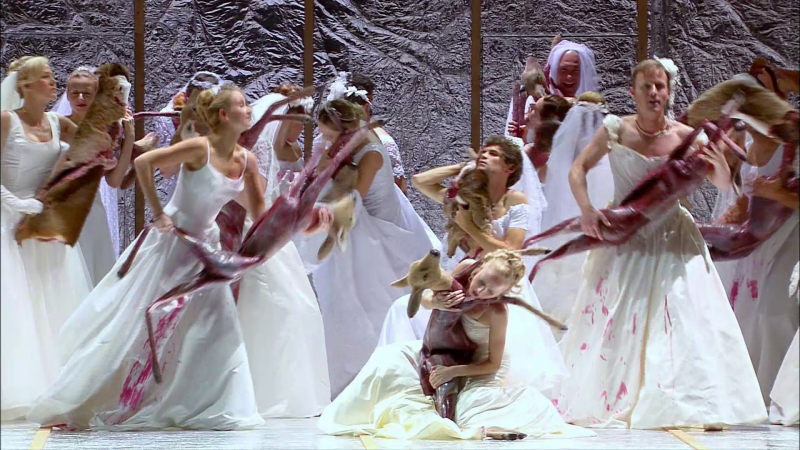
What table manners!
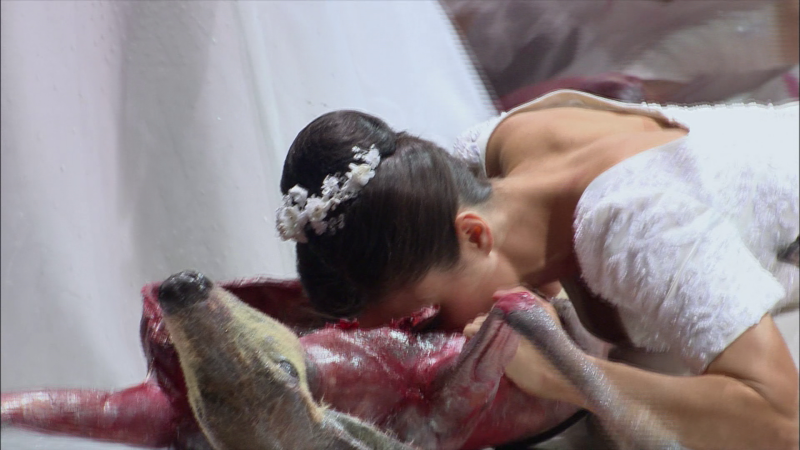
Kušej likes to symbolize isolation and alienation by building small stages inside the big stage (see, for example, the tunnel-like courtyard in Elektra). In Rusalka, Kušej has, of course, his dungeon for a lake. But his stroke of (comic) genius comes with what is probably the smallest stage he has built: the Rusalka aquarium. Poor Rusalka finds relief by jumping into the family aquarium. The image is both logical and unforgettable—it may well become an icon symbolizing contemporary 21st century opera (no goldfish were harmed in the making of this opera):
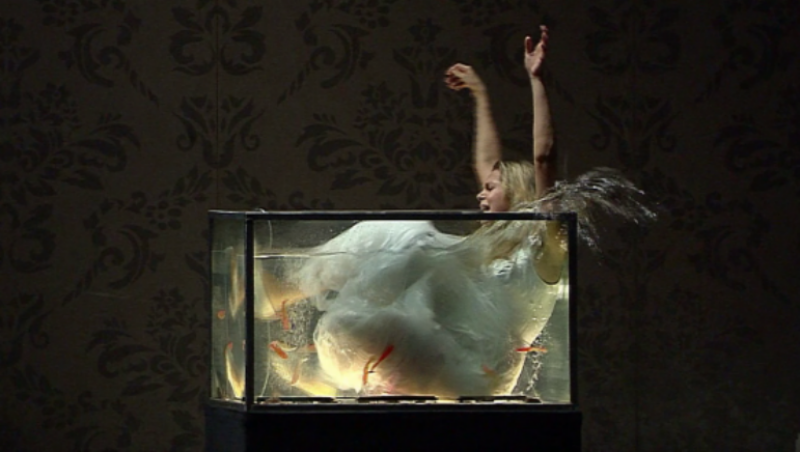
Rusalka flees the castle and seeks out the witch for advice. There is only one way for Rusalka to escape damnation: the Prince must die by Rusalka's hand:
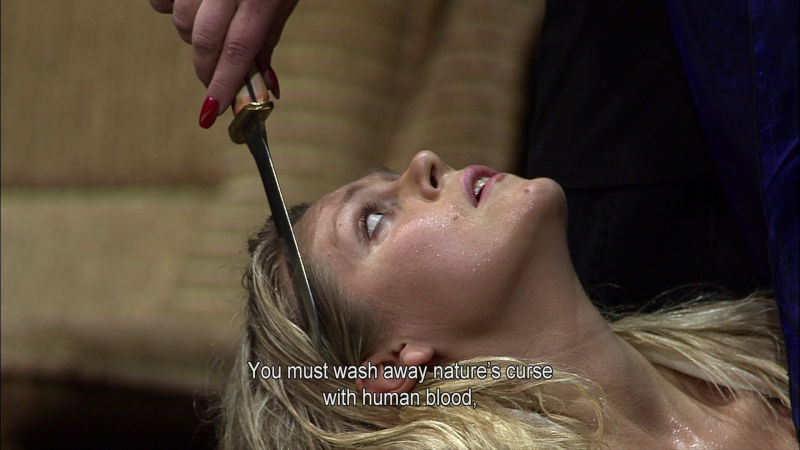
But before Rusalka can return to the Prince, the Water Goblin is busted by the vice squad. The girls are taken to a clinic for rehab. The girls are only interested in their water bottles, which they use to stay wet:
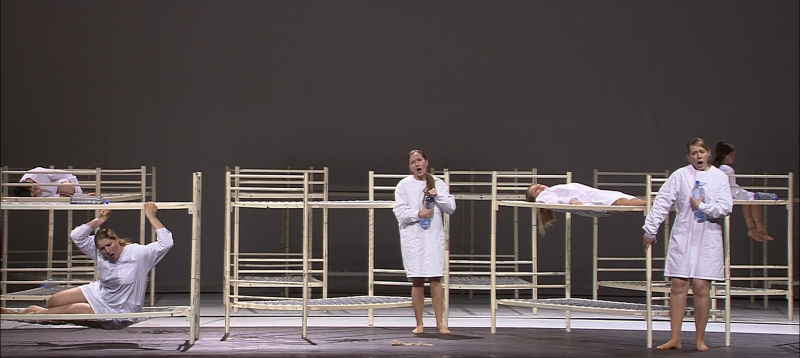
The Prince, distraught with remorse for his sin with the foreign Princess, finds Rusalka:
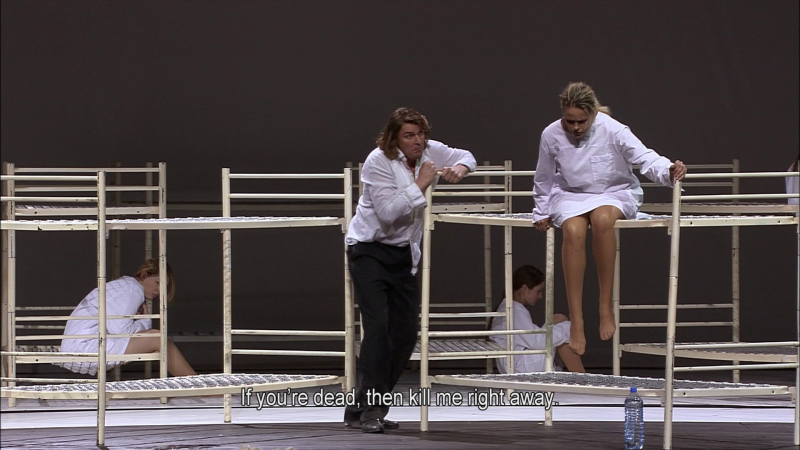
The Prince knows the law, but he begs for one more kiss. With this kiss, the Prince stabs himself with the witch's knife:
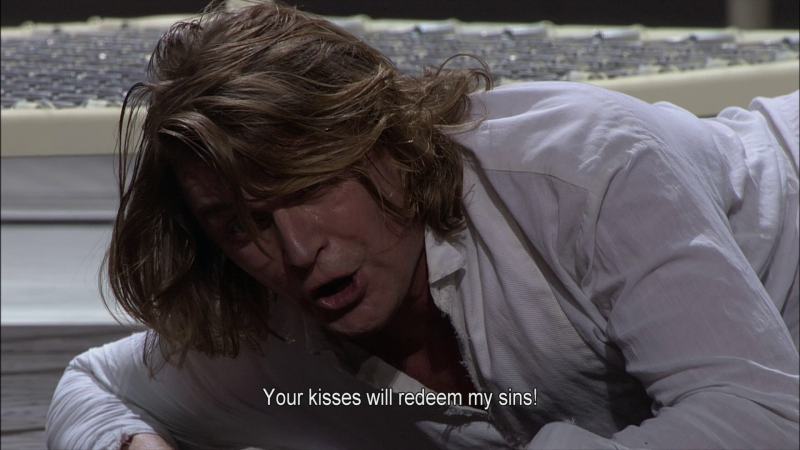
And so we have a happy ending, at least for the Prince:
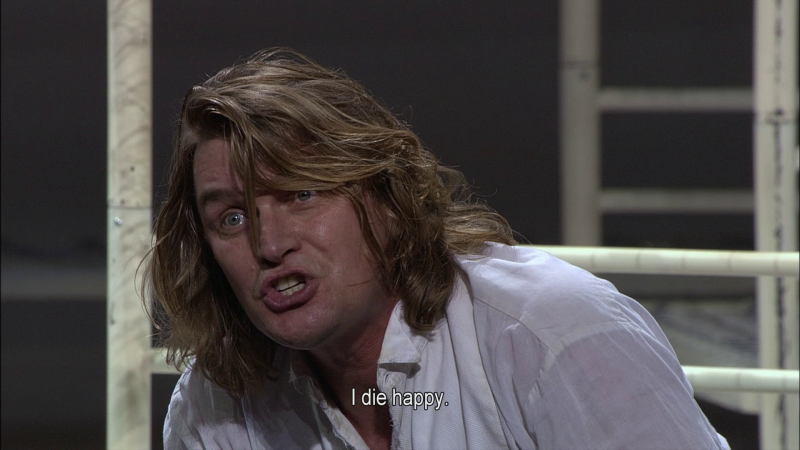
But what about Rusalka? Where will she go now?
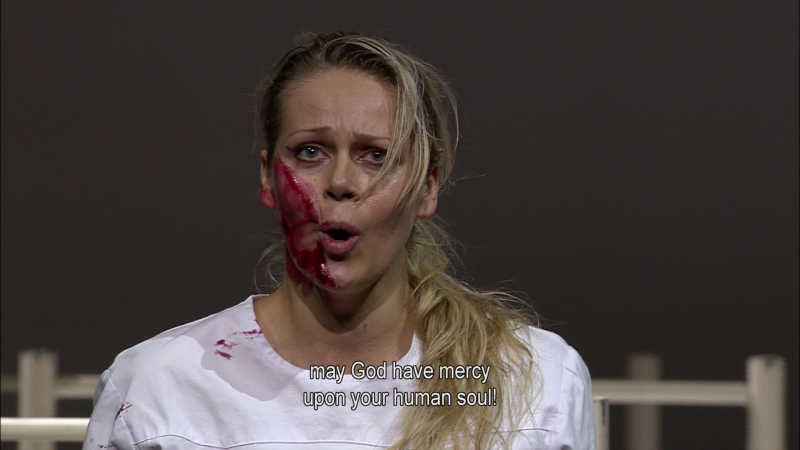
All the action is photographed and recorded with startling clarity. Under Thomas Grimm, the show is presented almost as a motion picture. The producers wanted and got it all: sold out live performances and an HDVD that set in 2012 new highest standards for quality in presentation for the home theater audience. Well, it's now 2018, and the latest highest standards would include 4K and high dynamic range camera capture. But Kušej's Rusalka will probably remain impressive for many years to come.
In the Gramophone 2011 Awards Issue, the editor of the Super Audio Corner (probably Andrew Everard) had this to say (at page 147) about the Rusalka Blu-ray: ". . . the high-definition video [captures] every detail from the shadowy opening to striking close-ups of skin-tones and rippling water, making this a real visual treat." (He liked the sound too!) But on page 125, Richard Fairman, while praising the singing and acting, dives under the table in reaction to the Martin Kušej reworking of this as a true-crime thriller.
David Shengold, writing in the July 2012 Opera News (page 54), also attacks the Kušej Regietheater updating of Rusalka. Well, I don't think many people, maybe not even Kušej, would propose that Rusalka in the aquarium should be considered the "standard" for this opera. There's plenty of room for a modern production of this is a traditional style. But opera has to move on with the rest of our culture, and today's audiences want to see updates as well as traditional versions of the repertory. The problem is that much of the updating makes so little sense. But this Kušej update does make sense: the same terrors and fears that ooze out of the myths of the water spirits are with us today all over the world with victims locked up in basements and private jails.
For fans of contemporary opera, this is a solid A+ show. If the images above are too garish for your taste, we have several traditional versions of Rusalka in Blu-ray for you to consider.
Here's the C Major trailer. I usually don't use SD YT clips, but this one is exceptionally good:
We furnish an Amazon button below because Amazon has the broadest sales reach of any vendor. But as explained in the special note above, you will want to shop around before buying this Rusalka:
OR
